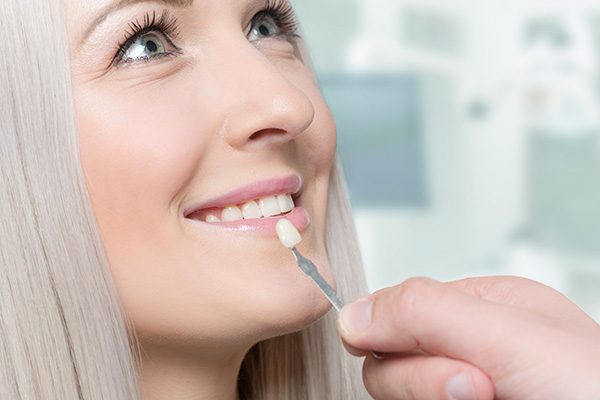 General dentistry focuses on preventative treatments, but it includes using dental cosmetics like veneers to restore or enhance the appearance of teeth. A veneer is a tooth-shaped restoration that is cemented to the front part of a tooth. It covers up any imperfections, damages, or deformities on that part of the tooth. Veneers started out as a way to make the smiles of Hollywood actors look more attractive on screen, and it took off in popularity from there.
General dentistry focuses on preventative treatments, but it includes using dental cosmetics like veneers to restore or enhance the appearance of teeth. A veneer is a tooth-shaped restoration that is cemented to the front part of a tooth. It covers up any imperfections, damages, or deformities on that part of the tooth. Veneers started out as a way to make the smiles of Hollywood actors look more attractive on screen, and it took off in popularity from there.
Veneers are typically recommended for teeth at the front of the mouth, and they can completely transform the way that your smile looks. Problems that general dentistry can address with veneers include:
- Stained teeth
- Chipped or broken teeth
- Deformed teeth
- Crooked teeth
- Spaces between teeth
- Misaligned teeth
How general dentistry restores teeth with dental veneers
Getting teeth restored with veneers involves multiple trips to the dentist. During the first visit, the dentist educates the patient about the process and examines their teeth and gums. The dentist might recommend other restorations, like crowns, if the damage to the patient’s teeth affects other areas besides the front-facing sides.
Placing conventional veneers requires removing enamel from the front part of the teeth being treated. It is a permanent modification that cannot be reversed in the future. Teeth that have been prepared for veneers will always need restorations to protect them moving forward.
There are specialty veneers called “no-prep” that do not require shaving off the enamel. These veneers are thinner than standard veneers, so they are better suited for cases with mild to moderate damage to a patient’s teeth. Severe discoloration or deformities on a tooth often require conventional veneers. The patient will be given the time to choose which option they prefer, and a date will be set for the first part of the treatment.
The process
The first part of the process of placing veneers starts with the dentist cleaning and preparing the patient’s teeth. A shot of a local anesthetic will be administered so the person will not feel pain as the dentist trims the enamel on their teeth.
Once all of the teeth being treated have been prepped, an impression of them is made by using digital images to create a 3D model. Alternatively, the dentist might take an impression of the patient’s teeth by having them bite down on a mold. The mold is sent to a dental lab where restorations like veneers are made. It takes a couple of weeks for the finished restorations to get back to the dentist. The patient gets temporary veneers for their prepped teeth to protect them while they wait for their custom veneers.
The temporary veneers are taken off during the second appointment, and customized veneers are cemented into place. Alterations are made as needed to ensure that everything looks right.
Transform your smile with veneers
Anyone can now craft their desired smile with veneers. Call or stop by our San Antonio clinic to set up an appointment with our dentist.
Request an appointment or call Culebra Family Dentistry at 210-787-1554 for an appointment in our San Antonio office.
Related Posts
Regular general dentistry visits can help maintain your dental health. This can apply to your family as well. Spotting dental issues early can improve your dental health. If you want to know why general dentistry can ward off future dental problems, here are the details.Preventive general dentistry starts at an early age. Bringing a child…
General dentistry practices are focused on the long-term prevention of oral health problems for their patient to help them avoid the need for restorative care, which is more invasive and expensive. One way they help with prevention is by recommending effective toothbrushes and toothpaste.Choosing the right toothbrush and toothpaste can make a big difference in…
General dentistry recommends brushing twice daily and flossing once per day to protect your teeth against common dental problems like gum disease and tooth decay. Bacteria in the mouth can cause both issues.Oral bacteria feast on sugars left in the mouth after meals, forming plaque and acids that damage teeth. Plaque is the film that…
